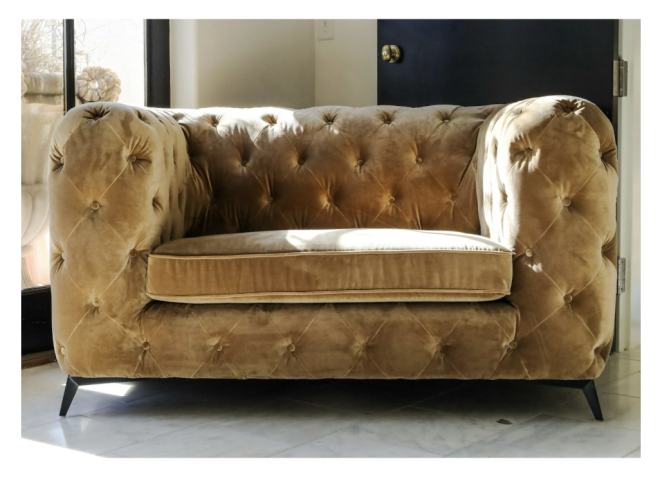- Change theme
Staple Gun or Nail Gun? Choosing the Right Tool for Your Woodworking Project

Both tools drive fasteners into wood, but they serve very different purposes depending on the task.
00:39 30 July 2025
Both tools drive fasteners into wood, but they serve very different purposes depending on the task. Choosing the right tool isn't just a matter of preference. It can determine the strength, safety, and finish quality of your entire project.
Staple Guns vs. Nail Guns: What's the Difference?
A staple gun fires U-shaped staples into surfaces, fastening materials together with two points of contact. It’s particularly useful when you’re attaching soft or thin materials to wood, such as fabric, mesh, or lightweight panels. Nail guns, on the other hand, shoot straight fasteners into wood. They offer stronger, more permanent joins for heavier-duty work like framing or fitting skirting boards.
The difference may sound small, but it’s important to match the right tool to the job. Using the wrong one can lead to weak joints, damaged materials, or unnecessary frustration during assembly.
When to Use a Staple Gun for Wood
If you're working with softer wood, non-structural parts, or materials like canvas, insulation, or upholstery, a staple gun for wood is often the better choice. It allows you to secure materials quickly without splitting thin pieces of timber or creating deep holes that need filling.
For example, if you’re:
- Fixing fabric to a wooden frame
- Attaching wire mesh to a timber fence
- Securing a lightweight panel to the back of a cupboard
- Fastening insulation to wooden rafters
In these cases, a staple gun delivers enough hold to keep materials in place while being easy to control. The fasteners are available in a range of lengths and widths, so you can match the staple size to your materials and ensure a clean, firm grip.
Manual staple guns are often enough for home DIY, but if you’re working on larger projects, consider an electric or pneumatic version for speed and consistency.
When to Choose a Nail Gun Instead
A nail gun is the better option when you need holding strength. Nails sink deeper into the wood and create a more durable joint, which is crucial for structural projects or anything under tension. They’re ideal for:
- Fitting door and window frames
- Attaching skirting or architrave
- Building internal frames or furniture bases
- Securing heavy trims or wall panelling
Nail guns come in different types depending on the job. Brad nailers are best for fine trim work, finish nailers work well for mouldings, and framing nailers are suited to heavy construction. Each provides a cleaner look than staples, especially if the fastener heads are set below the surface and filled before painting.
If your project needs long-term strength and a polished finish, a nail gun is often worth the investment.
Appearance and Finish
Staples tend to leave a more visible mark because of their wider crown. That’s not usually a problem for hidden areas, but if you’re working on a visible surface, you’ll either need to disguise the staple or accept that it may be noticeable.
Nail guns, especially brad nailers, are designed to leave a minimal mark. The fasteners are thinner and the holes can be filled and sanded flush with very little effort. This makes them the preferred option for visible trim, cabinet making, or decorative panelling.
Why a Staple Remover Belongs in Every Toolbox
Whether you’ve driven a staple in the wrong place, used the wrong size, or need to take something apart later, a good remover lets you lift staples out of wood cleanly and safely. Staple removers are especially useful during upholstery projects, furniture repairs, or when stripping old panels. Instead of hacking away with a screwdriver, you can keep your work neat and reduce the risk of splinters or gouges.
The right staple remover minimises damage to the timber. A claw-style design can get under deep staples, while flat-blade options are better for surface-level removals. Always go slow, and if the staple resists, use a pair of pliers to pull it the rest of the way without tearing the wood grain.
Which Tool Is Easier to Use?
For beginners, a staple gun for wood is generally easier to handle. It’s lighter, safer, and less intimidating than a nail gun. Manual models require more effort but offer full control. You’re also less likely to cause injury or over-penetrate the wood.
Nail guns, while faster, come with more safety precautions. Many models require compressors, proper loading procedures, and safety locks. If you’re new to power tools, they’re best used with caution and some practice on scrap wood first.
Final Thoughts
Choosing between a staple gun and a nail gun depends entirely on the task. Use a staple gun for wood when you're attaching soft materials, lining panels, or working with thin timber. Reach for the nail gun when you need a stronger hold and a more refined finish.
Keep a staple remover in your toolbox to correct any mistakes quickly and cleanly. Your woodworking projects will be smoother, faster, and more enjoyable.
